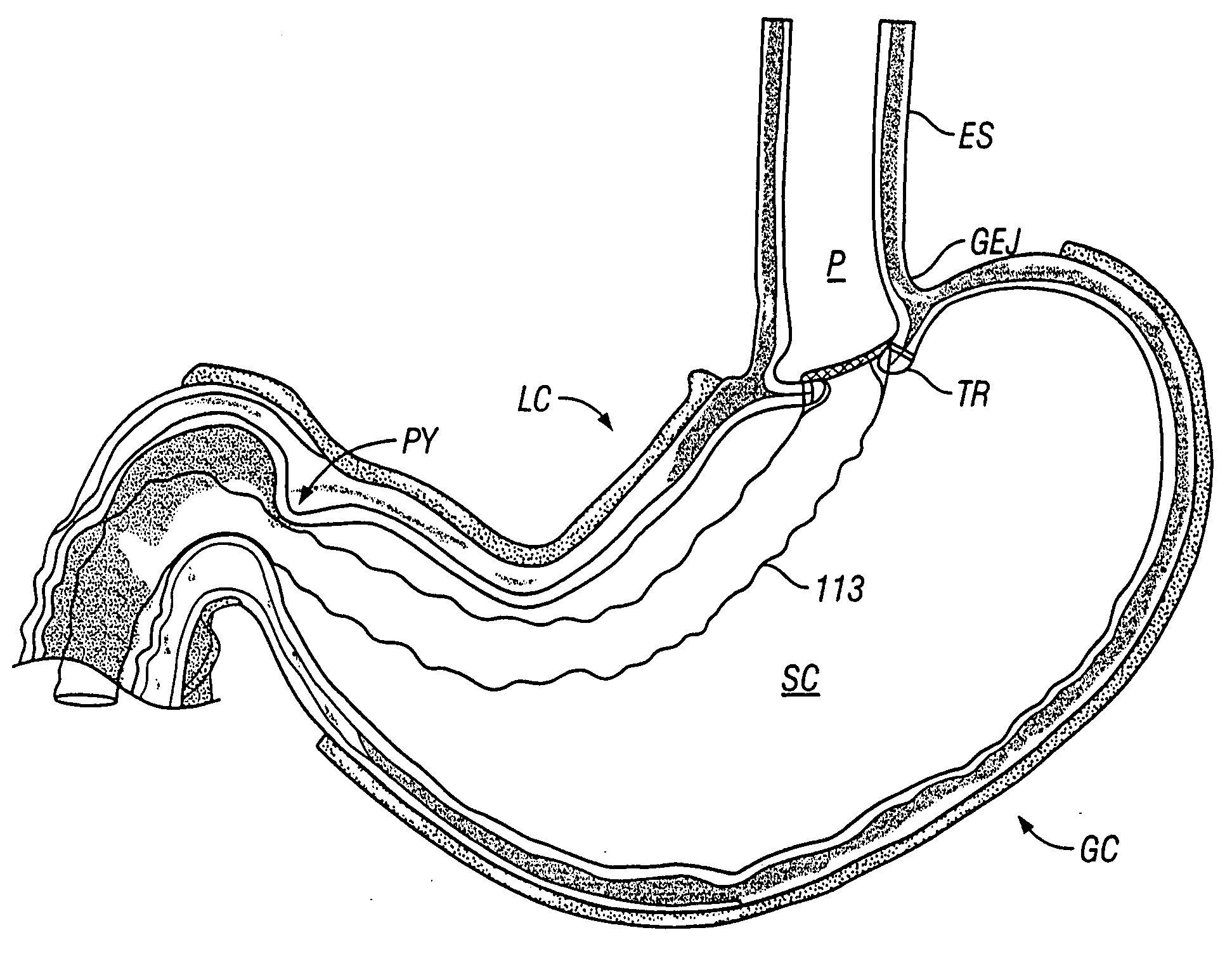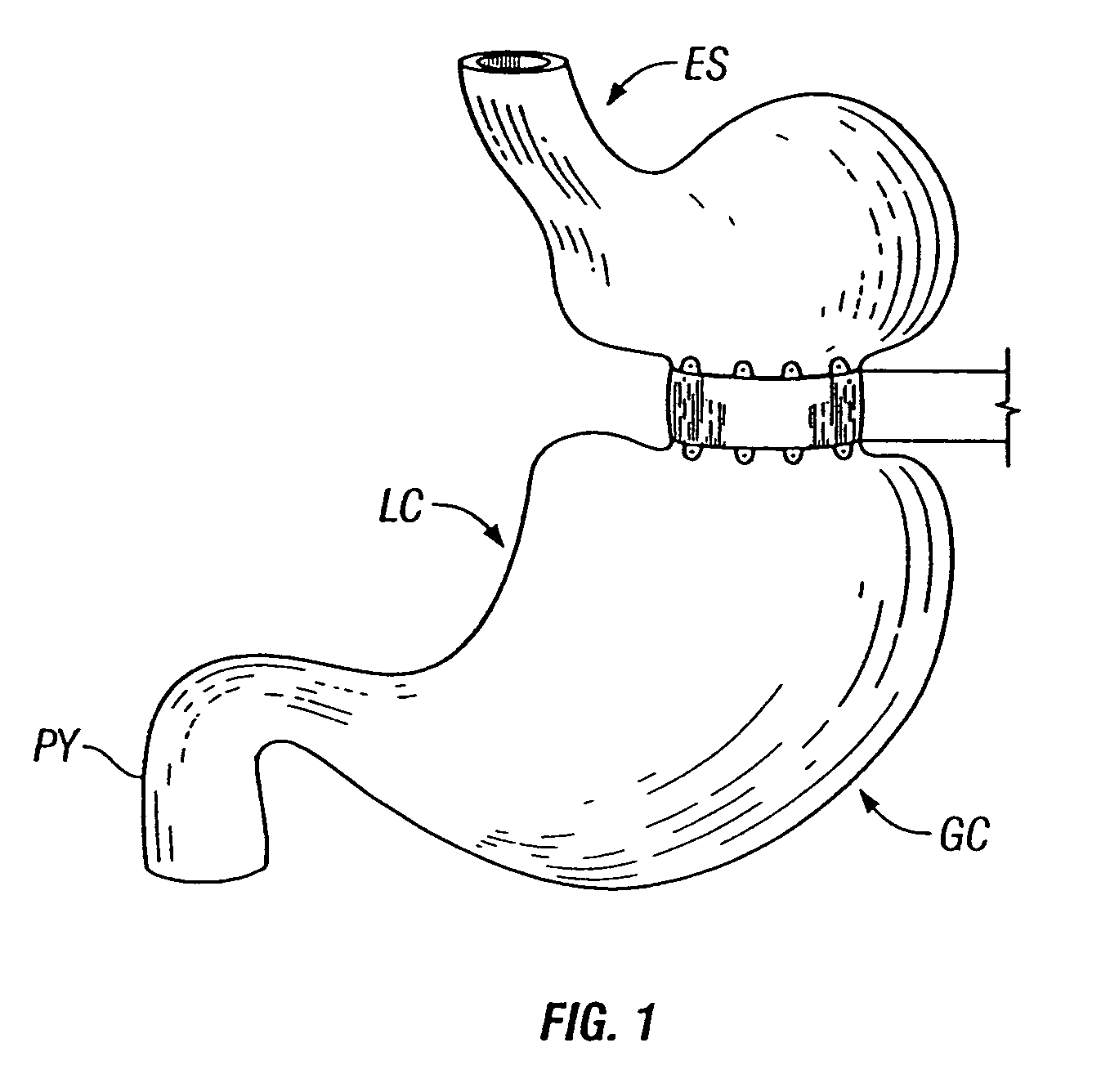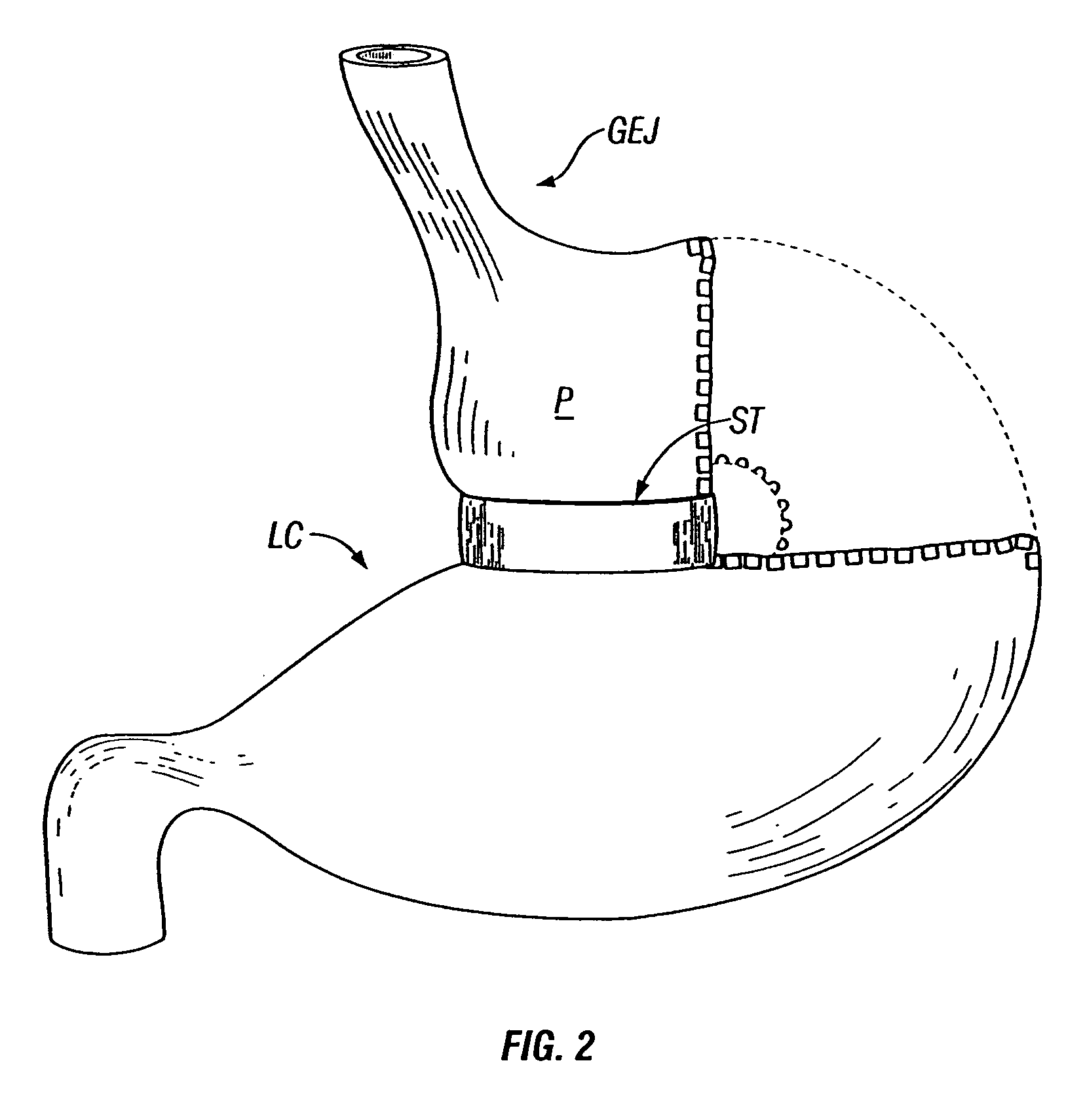Method and device for use in endoscopic organ procedures
a technology for endoscopic organs and procedures, applied in the field of medical equipment and methods, can solve the problems of leaving patients who are considered obese or moderately obese with few, if any, interventional options, and achieve the effects of facilitating the “dumping” syndrome, facilitating the alimentary flow of digestive secretions, and facilitating adhesion prevention
- Summary
- Abstract
- Description
- Claims
- Application Information
AI Technical Summary
Benefits of technology
Problems solved by technology
Method used
Image
Examples
Embodiment Construction
[0045] The present invention provides, in part, for methods and devices for hollow organ division and restriction, more particularly providing methods and devices to perform a transoral, endoscopically mediated stomach reduction for purposes of, e.g., treating obesity. For purposes of the present invention, the hollow body organ shall include the entire gastrointestinal tract, including, but not limited to, the esophagus, stomach, portions of or the entire length of the intestinal tract, etc., unless specified otherwise.
[0046] As previously discussed, the results of some clinical procedures of the prior art are shown in FIGS. 1-3, from a perspective external to the stomach. An example of a result of the procedure in one variation of the present invention is shown in FIG. 4A, which depicts an external anterior view of a stomach organ 100, having an esophagus 101 (cut away to reveal the esophageal lumen 102), and further depicting a circumferential orifice or stoma 103, configured fr...
PUM
 Login to View More
Login to View More Abstract
Description
Claims
Application Information
 Login to View More
Login to View More - R&D
- Intellectual Property
- Life Sciences
- Materials
- Tech Scout
- Unparalleled Data Quality
- Higher Quality Content
- 60% Fewer Hallucinations
Browse by: Latest US Patents, China's latest patents, Technical Efficacy Thesaurus, Application Domain, Technology Topic, Popular Technical Reports.
© 2025 PatSnap. All rights reserved.Legal|Privacy policy|Modern Slavery Act Transparency Statement|Sitemap|About US| Contact US: help@patsnap.com



